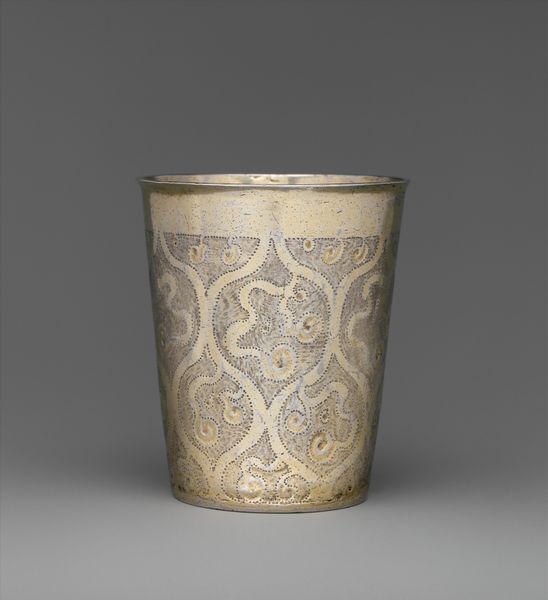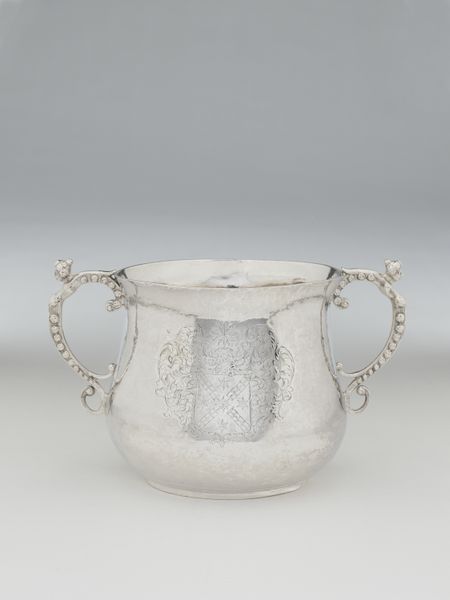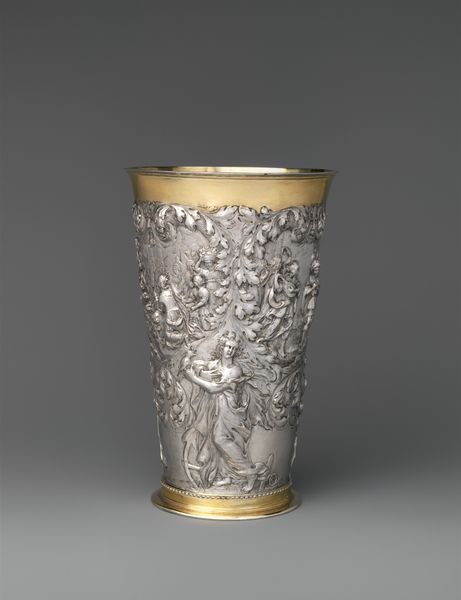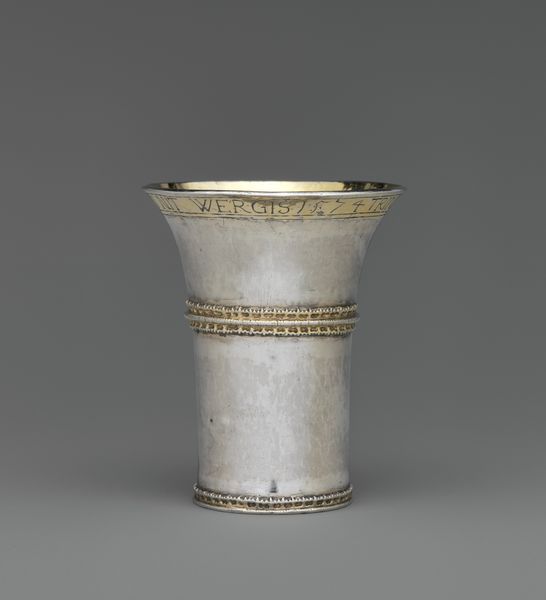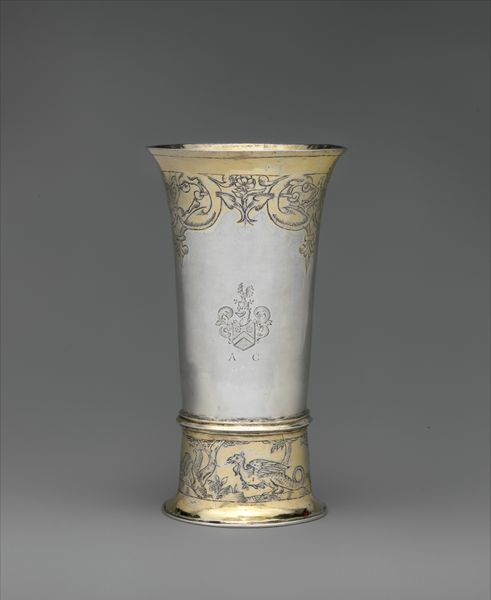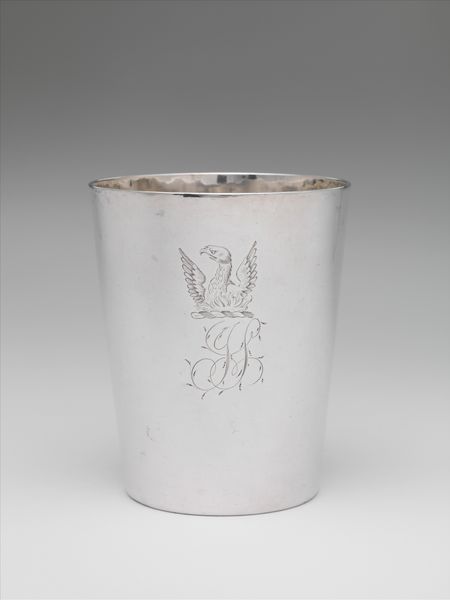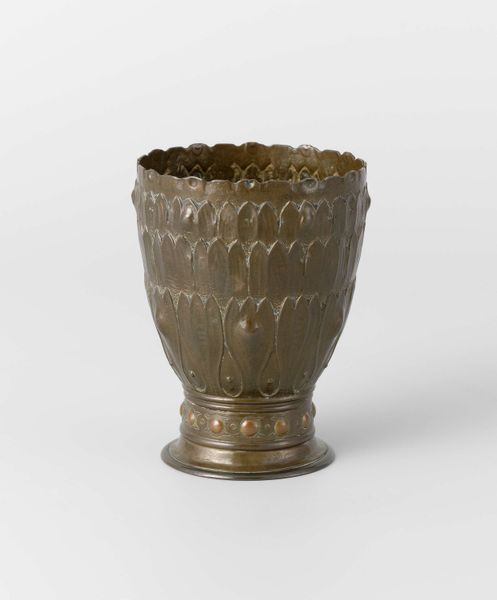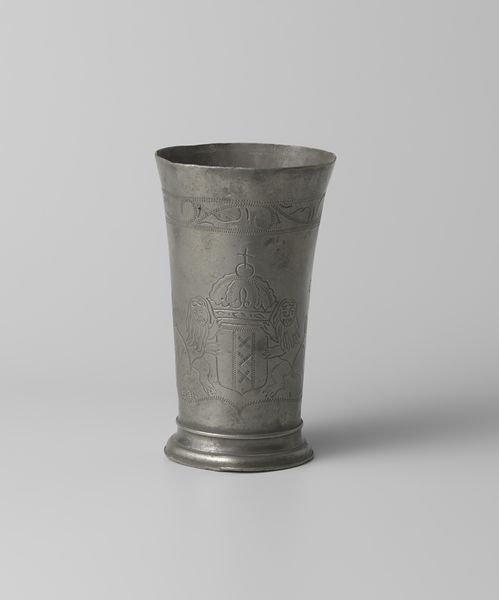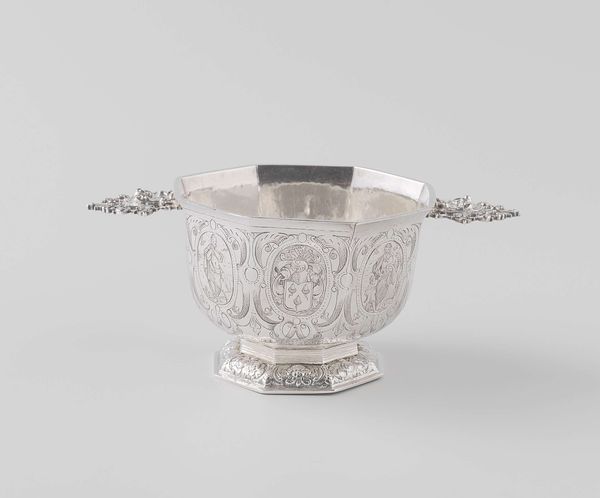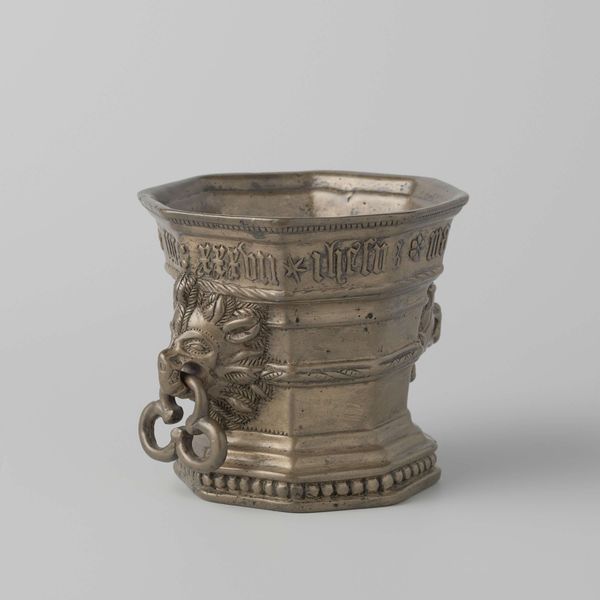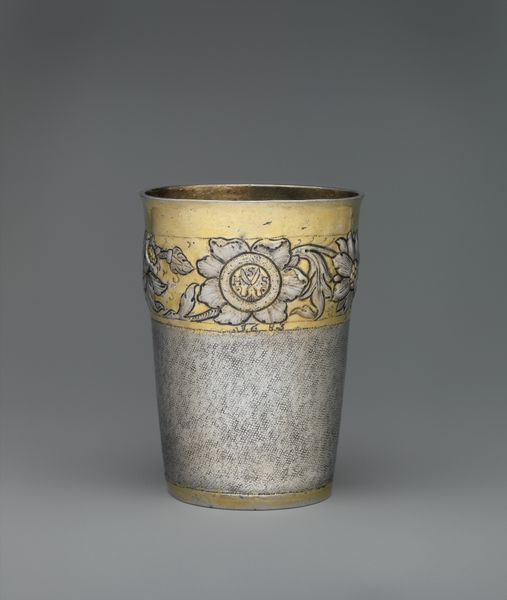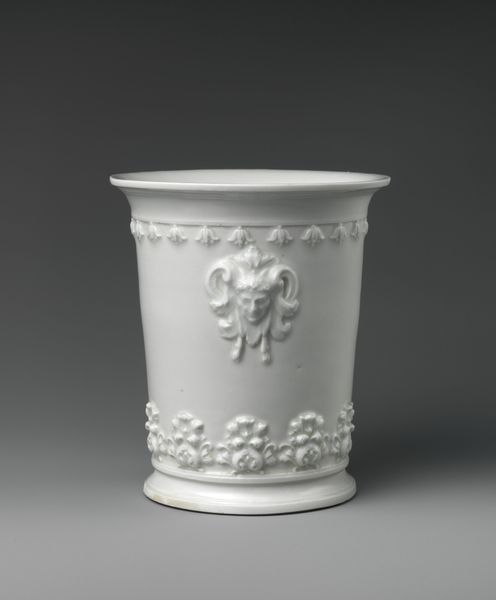
silver, metal, engraving
#
silver
#
baroque
#
metal
#
stoneware
#
ceramic
#
engraving
Dimensions: Overall: 5 3/8 in. (13.7 cm); 7 oz. 6 dwt. (227.3 g) Lip: Diam. 4 1/8 in. (10.5 cm) Base: Diam. 3 7/16 in. (8.7 cm)
Copyright: Public Domain
Editor: Here we have a silver beaker crafted between 1667 and 1670 by John Hull. It’s currently housed in the Metropolitan Museum of Art. The engraving on the metal is quite striking. What stands out to you in terms of the material craftsmanship involved here? Curator: The materiality speaks volumes. Silver wasn’t just a pretty metal; it represented concentrated wealth, and the act of transforming it into a drinking vessel points to specific labor practices and social hierarchies. Who had access to the raw materials? Who possessed the skills for refining, shaping, and engraving? These are the questions that come to my mind. Editor: I hadn't thought about the access to resources. Curator: Consider the process. Mining, smelting, transporting silver—all incredibly labor-intensive activities. And engraving isn’t a simple process; it takes immense skill and would have required specialized tools and training. Someone’s labor went directly into this beaker. Also consider that the decorative choices – that engraved coat of arms – would not have been an idle one; who benefits? Who consumes? These objects and practices reveal networks of obligation. Editor: So, looking at the silver itself tells us a story about production and social context? Curator: Precisely. The "Beaker" ceases to be just a beautiful object. We're looking at a testament to the economic and social conditions of its creation. Does it change the way you look at other pieces that emphasize craftsmanship? Editor: Absolutely. I’ll definitely consider the socioeconomic factors next time, instead of only focusing on the aesthetic impression.
Comments
No comments
Be the first to comment and join the conversation on the ultimate creative platform.

